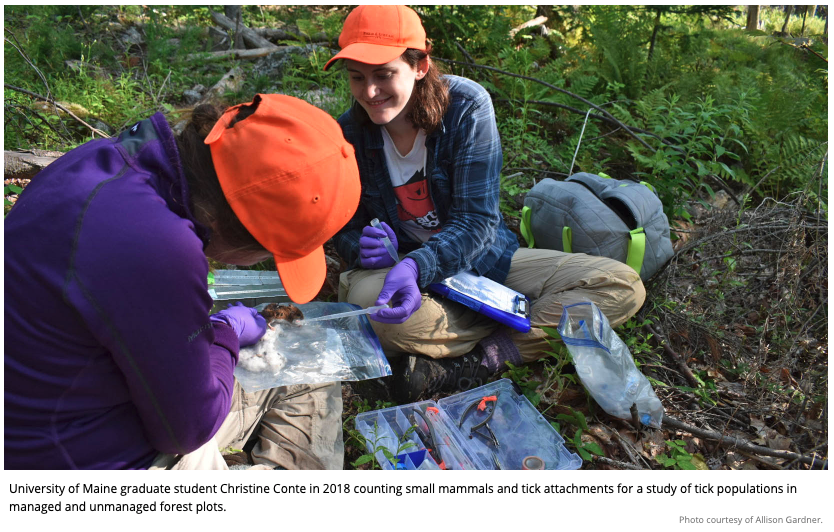Study links active forest management to reduced tick populations

Active management of forests, including timber harvesting to meet silvicultural objectives, can influence the transmission dynamics of tick-borne diseases such as Lyme, anaplasmosis and babesiosis, according to a new study by a team of University of Maine researchers.
Christine Conte, an ecology and environmental sciences student who earned a master’s degree from UMaine in 2019, led the study of blacklegged tick populations in recently harvested and unharvested forest plots to determine the impact of forest management on nymphal tick abundance and infection prevalence. The study was conducted in Hancock County, Maine on privately owned small woodlots and land trust properties.
Using trail camera videography to capture large mammal visits to the study plots, live small mammal trapping and tick counts, vegetation surveys and off-host tick collection methods, Conte, and faculty members Allison Gardner and Jessica Leahy gathered data from forest plots harvested in the last five years and those unharvested for at least 20 years.